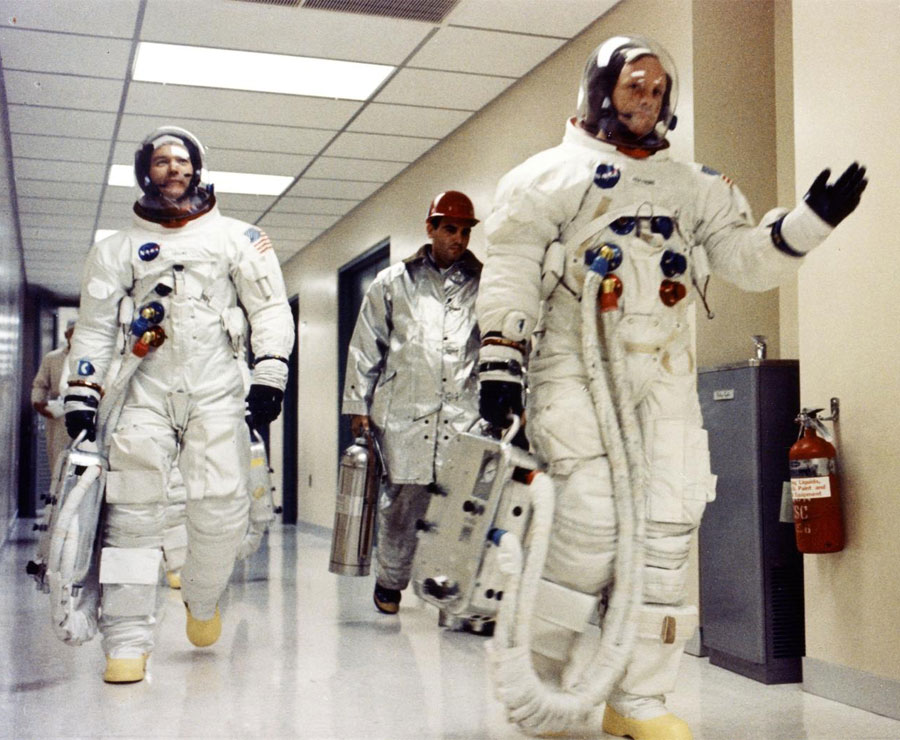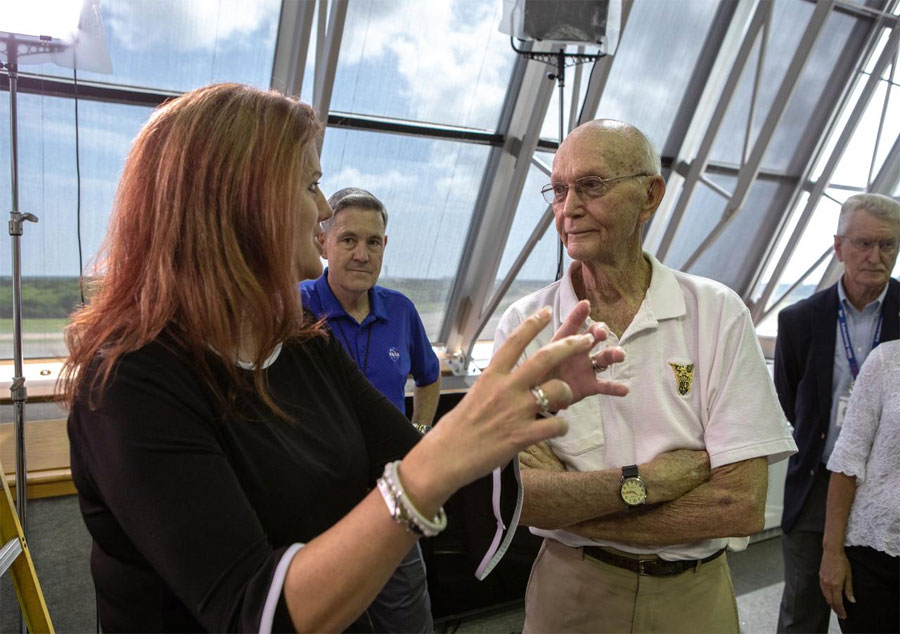Remembering Apollo Astronaut Michael Collins
Published: April 1 2021 Updated: March 10 2025

...this venture has been structured for three men, and I consider my third to be as necessary as either of the other two.
The world has lost an impactful proponent of space exploration and education with the passing of astronaut Michael Collins. Born in Rome, Italy, on October 31, 1930, to a career U.S. Army family, growing up, Collins traversed the United States and beyond. Ambitious and intellectual, he entered the U.S. Military Academy at West Point, graduating with a Bachelor of Science degree in military science. Following graduation, Collins joined the U.S. Air Force in 1952, a career that spanned 30 years as an active and reserve officer and earned him the rank of Major General. In 1960, Collins was accepted to the Experimental Flight Test Pilot School and served as a U.S. Navy Test Pilot.
Mike Collins met Patricia Finnegan at a U.S. Air Force Service Club and married her in 1957. They had three children Kate (1959), Ann (1961), and Michael (1963). Their marriage endured through his adventurous career until Patricia’s passing in 2014.

Collins’s inspiration to apply as a NASA astronaut was sparked by the Mercury 6 flight of John Glenn orbiting Earth in 90 minutes. On his second attempt, Collins was accepted to the third group of NASA astronauts in October 1963.
Assigned to his first spaceflight, Gemini 10, Collins and crewmate John Young, launched in July 1966 upon a three-day flight. As the pilot, Collins completed one of two planned dockings with the Agena target vehicle. This maneuver was crucial for understanding how future Apollo command modules would successfully dock with lunar modules as they ascended from the lunar surface to lunar orbit. The mission marked Collins as the first NASA astronaut to perform two spacewalks in a single mission.
Selected as capsule communicator (capcom) for the translunar trajectory of Apollo 8, placing the spacecraft in lunar orbit for the first time, Collins again played a critical role in shaping history. Initially assigned to Apollo 9, Collins was replaced due to surgery to repair a herniated disc. He was reassigned to Apollo 11 as the command module pilot, unaware that it would be the historic mission first to see humans set foot on the Moon.

It was Michael Collins who designed the notable Apollo 11 patch. Starting with Jim Lovell’s suggestion to incorporate an eagle as the symbol of the United States, Collins added the lunar surface with Earth in the background and the olive branch as a symbol of peace. The famed mission launched July 16, 1969, reaching the Moon’s orbit July 19, and landed astronauts Neil Armstrong and Buzz Aldrin on the surface the following day. Collins guided the crew home to a hero’s welcome on July 24. Collins chose not to return to space in future missions citing the hardship placed on astronauts’ families and retired from NASA in 1970.
Following a brief period as the Assistant Secretary of State for Public Affairs, Collins secured permission to leave and become Director of the National Air and Space Museum, yet to be built. Initially authorized by Congress in 1946, it remained unfunded. Working with Sen. Barry Goldwater, Collins successfully pushed hard for the museum resulting in approved funding in 1972. His role in creating the museum included overseeing construction, hiring staff, the creation of exhibits, and launching the Museums Center for Earth and Planetary Studies focused on research and analysis of lunar and planetary spacecraft data. Opening July 1, 1976, the project was completed on time and under budget. Collins continued as the director until 1978 when he became the undersecretary of the Smithsonian Institute. The importance of Michael Collins’ role in bringing the National Air and Space Museum to fruition, providing a home for national treasures and people a place to immerse themselves in history, is a true legacy.

Collins joined the private aerospace sector in 1980, and opened his consulting firm in 1985. The author of several books, his most notable is his autobiography, Carrying the Fire: An Astronaut’s Journeys deemed one of the outstanding accounts of life as an astronaut.
Collins was inducted into four halls of fame, including the U.S. Astronaut Hall of Fame in 1993 and the National Aviation Hall of Fame (NAHF) in 1985.
Michael Collins succumbed to cancer on April 28, 2021. He leaves a legacy of service and history marked by his roles as NASA astronaut and the driving force behind the National Air and Space Museum.